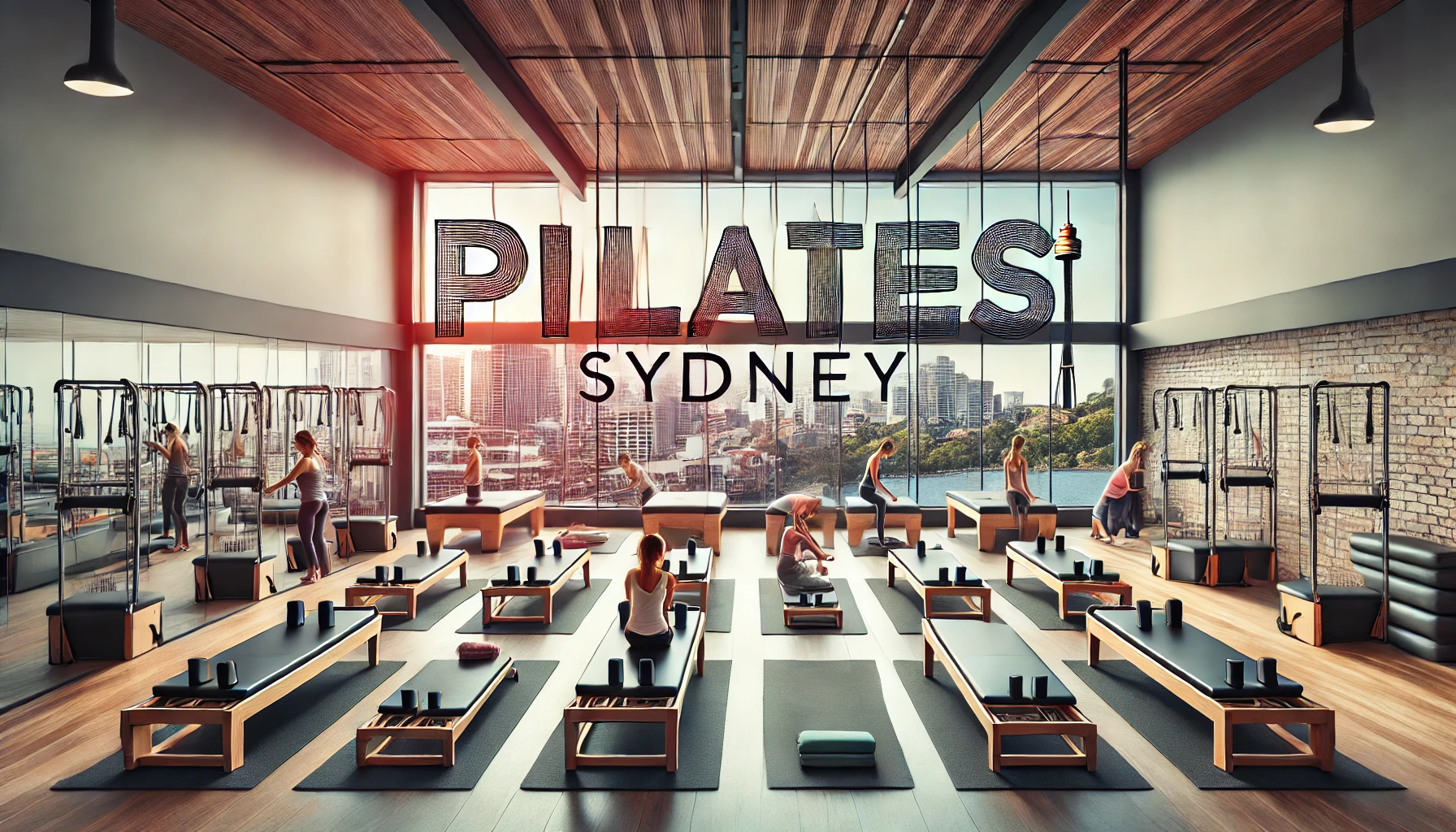Pilates gear essentials you need to enhance home workouts and improve body support during your fitness sessions
Building an effective home movement routine is easier than ever, but the difference between going through the motions and making meaningful progress often comes down to the pilates gear you choose. The right tools help your joints feel supported, give muscles a clear line of work, and make small spaces feel like tailored studios. When your setup reflects how the body actually moves, you can create a pilates workout at home that feels smooth, safe and satisfying. The beauty of pilates is that it is scalable: with a few intelligently selected props and a practical plan, you can cultivate strength, mobility and calm without leaving the lounge room. Whether you are pairing home sessions with classes in Rhodes, Lidcombe, Sydney CBD, Chatswood or Burwood, or you are starting fresh, this guide covers what matters, why it works, and how to integrate it into your weekly practice.
Foundations first: mats, blocks and bands that teach alignment
Every effective home practice starts with a mat that respects your joints. A dense, non-slip mat cushions your spine while giving enough feedback so you can sense the subtle articulation of each vertebra. Too squishy and you lose stability; too thin and your tailbone protests. Alongside the mat, lightweight blocks act like extensions of the floor, bringing it closer when tight hips or hamstrings limit range. Props are not shortcuts; they are scaffolding that lets you build alignment without strain. A fabric loop band or a long resistance band adds directional cues that wake up sleepy muscles and tone overactive ones. When you press into a band during bridging, for example, you recruit external rotators and glutes, which supports the pelvis and protects the lower back.
These simple tools are inexpensive but powerful. They are the everyday instruments of a refined practice, teaching your feet to anchor, your knees to track, and your ribs to move like bellows. You will feel the difference during core work when your lower abdominals switch on without your hip flexors hijacking, and during shoulder patterns when your scapulae glide instead of hiking toward your ears. Over time, this careful attention pays off in day-to-day life: stairs feel smoother, sitting is less stiff, and standing tall takes less effort.check out, pilates melton
Because pilates emphasises control, you do not need a crowded space to see results. A clean corner with enough room to lunge and roll down is sufficient. What you do need is an intelligent plan and consistent appointments with yourself. Pairing home sessions with occasional studio check-ins is a smart strategy; instructors in Sydney can calibrate your technique and suggest upgrades when you are ready to add challenge or variety.
Scaling your practice: circles, balls and the pilates reformer machine
Once you have built confidence with the basics, a small circle and a soft over-ball are natural next steps. The circle offers gentle resistance that draws attention to the inner thighs and deep abdominals. When you squeeze or press outward with measured breath, you learn to balance effort with ease. The over-ball supports the lumbar curve in ab curls, provides feedback under the shoulder blades for thoracic mobility, and turns simple bridges into precise posterior chain training. These tools take up almost no storage space but deliver outsized benefits for stability and control.
At some point, curiosity will lead you to the pilates reformer machine. The reformer is the most versatile piece of equipment for small-footprint strength and mobility because the spring system can be tuned to your needs in seconds. You can load the legs while sparing the back, build shoulder endurance without neck strain, and explore spine articulation with steady support. While many people first encounter this equipment in a pilates studio, there are compact home options that fold or slide under a bed. If space or budget is a constraint, you can achieve excellent results with bands and a stable anchor point, simulating reformer lines of pull for rows, presses and hip work.
For those asking about reformer pilates near me in Sydney, pairing periodic equipment sessions with a home routine is ideal. You might book a class in Chatswood after work, use your home gear for shorter sessions during the week, and check in with an instructor monthly for technique refinements. This rhythm multiplies your progress, keeps the nervous system engaged with new challenges, and turns fitness from a task into a satisfying practice.
Intelligent programming: blend strength, mobility and nervous system resets
Good gear makes a difference only when used within a thoughtful plan. A balanced home session moves the spine in all directions, integrates the hips and shoulders, and ends with a short down-regulation to leave you calm rather than wired. You can open with breath-led mobility to prime the ribs and pelvis, move into core-anchored strength patterns using the band and circle, and finish with gentle hip or thoracic stretches on the mat. Over weeks, you can cycle emphasis: one block for hip strength and ankle mobility, another for mid-back extension and shoulder control. This periodisation prevents boredom and distributes stress across tissues, which is critical for longevity.
If you enjoy barre-inspired rhythm, you can layer in standing sequences that blend pilates barre ideas with floor work. A countertop or stable chair becomes your barre; a band around the thighs turns lateral stepping into a serious glute session. Barre pilates patterns challenge balance, build postural endurance, and keep your heart rate in a comfortable aerobic range. They are especially helpful for people who feel tight from desk work because they invite the ankles, knees and hips to coordinate through full, supported ranges. Those who prefer floor-dominant routines can stay on the mat; the point is to create a flow that fits your space and mood.
Breath remains the cornerstone. Lengthen your inhale to invite space, then use a full exhale to engage the deep abdominals and pelvic floor. You will find that shoulder tension drops when exhalations are complete, and hip mobility improves when the nervous system feels safe. This is not just theory; it is the lived experience of thousands who discover that stress softens when breath and precision meet.
In a city like Sydney, life can be fast. That is why many people supplement home practice with sessions in Rhodes, Lidcombe, Sydney CBD, Chatswood or Burwood. Instructors there can test your movement patterns, spot when a knee tracks inward, or show you how a small rib adjustment turns a shaky plank into a stable hover. They can also help you choose upgrades to your gear when the time is right, saving you money compared to trial-and-error.
Choosing quality and navigating the wider pilates landscape
When buying pilates gear, aim for durability and feel rather than chasing the cheapest option. A circle that maintains resistance, a mat that does not peel, a band that resists rolling and pinching—these things make you want to keep using them. If you eventually expand into larger equipment, do your homework. Home reformers vary widely in build quality and adjustability. If purchase is not practical, consider structured small-group classes on studio equipment where you get the benefits without the footprint at home. You can explore a pilates free trial where available to experience different modalities and see what resonates with your goals.
It is common to look around the country and compare options. Communities from pilates fremantle in Western Australia to pilates melton in Victoria all celebrate the method in their own way, and it is helpful to know that good instruction exists wherever life takes you. Still, the basics remain the same: consistency, intelligent sequencing, and a respect for how your body adapts. If your search history includes pilates sydney, pilates rhodes or pilates chatswood, you are already on the right path. If you are rehab-minded, look for instructors who can communicate clearly with allied health providers; if you are performance-oriented, ask about sport-specific programming.
Home routines are not about replacing community; they are about extending it. Online guidance can mirror the structure of pilates anytime style platforms, yet your local studio is the anchor that keeps your technique honest. When you return to class after a few weeks of home practice, you will notice better control, smoother transitions, and a more responsive core. Instructors will notice too, and they will push you appropriately, building strength, mobility and resilience without sacrificing softness.
The goal is not to collect more gear but to collect better movement. If a single band teaches you to stabilise your hips so your knees stop aching on the stairs, that is a win. If a circle helps you connect breath and core so your back no longer tightens during crunches, that is a win. If a mat supports daily floor time that turns into a habit, that is the biggest win of all. With a little intention, a few smart tools, and a clear plan, your home can become the most convenient pilates studio you have ever known. And if you want to complement that with expert guidance across Sydney neighbourhoods, you can explore schedules and programs at pilatesbarre.com.au to keep your momentum strong and your body supported.

